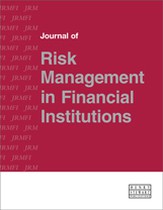Causal analysis of operational risk for deriving effective key risk indicators
Abstract
Key risk indicators (KRIs) are intended to track operational risk exposure and provide early indications of potential severe losses. Guidance on establishing the most effective KRIs for financial institutions is, however, limited and, as a result, KRIs are typically derived from an institution’s available metrics, often leading institutions to compensate for a lack of effective KRIs by increasing the number of KRIs monitored. Strengthening the ability to identify and evaluate KRIs’ effectiveness could increase the value of each KRI, further reducing the number of KRIs necessary and increasing the overall value of institutions’ KRI framework. This paper proposes a theoretical foundation and method for identifying and evaluating effective KRIs. The proposed solution originates from research on causal analysis of operational risk, particularly using Bayesian networks. It was found that high-frequency and tail events can be related to a shared set of causes which can be exploited for the identification and evaluation of two categories of KRIs: (1) shared causes that constitute major risk drivers; and (2) high-frequency events providing a strong indication of changes in exposure to low-frequency, high-severity events. Applying the suggested method, financial institutions can map and evaluate current and potential KRIs, ensuring reliable monitoring of the operational risk exposure level.
The full article is available to subscribers to the journal.
Author's Biography
Lasse B. Andersen is a professor II in risk management at the University of Stavanger, Norway. Lasse has considerable research experience within several industrial sectors and has more than 20 years of experience with risk analysis in different sectors such as oil & gas and banking & finance. Lasse is currently CEO of Combitech Norway.
David Häger is an associate professor II in risk management at the University of Stavanger, Norway. He is a civil engineer and holds a PhD in stochastic modelling and analysis of operational risk in financial institutions from the University of Stavanger. From 2007 to 2014 he participated in a research project with five Norwegian banks on operational risk management and has more than 10 years of industry experience with risk analysis and risk management.
Hilde B. Vormeland holds a MSc in economics and currently is a PhD candidate in operational risk management in financial institutions at the University of Stavanger, Norway. She started her PhD in 2012, which is part of a research project on operational risk management with five participating Norwegian banks. David Häger is her main supervisor for the PhD.
Citation
Andersen, Lasse B., Häger, David and Vormeland, Hilde B. (2016, June 1). Causal analysis of operational risk for deriving effective key risk indicators. In the Journal of Risk Management in Financial Institutions, Volume 9, Issue 3. https://doi.org/10.69554/UDPX5085.Publications LLP
